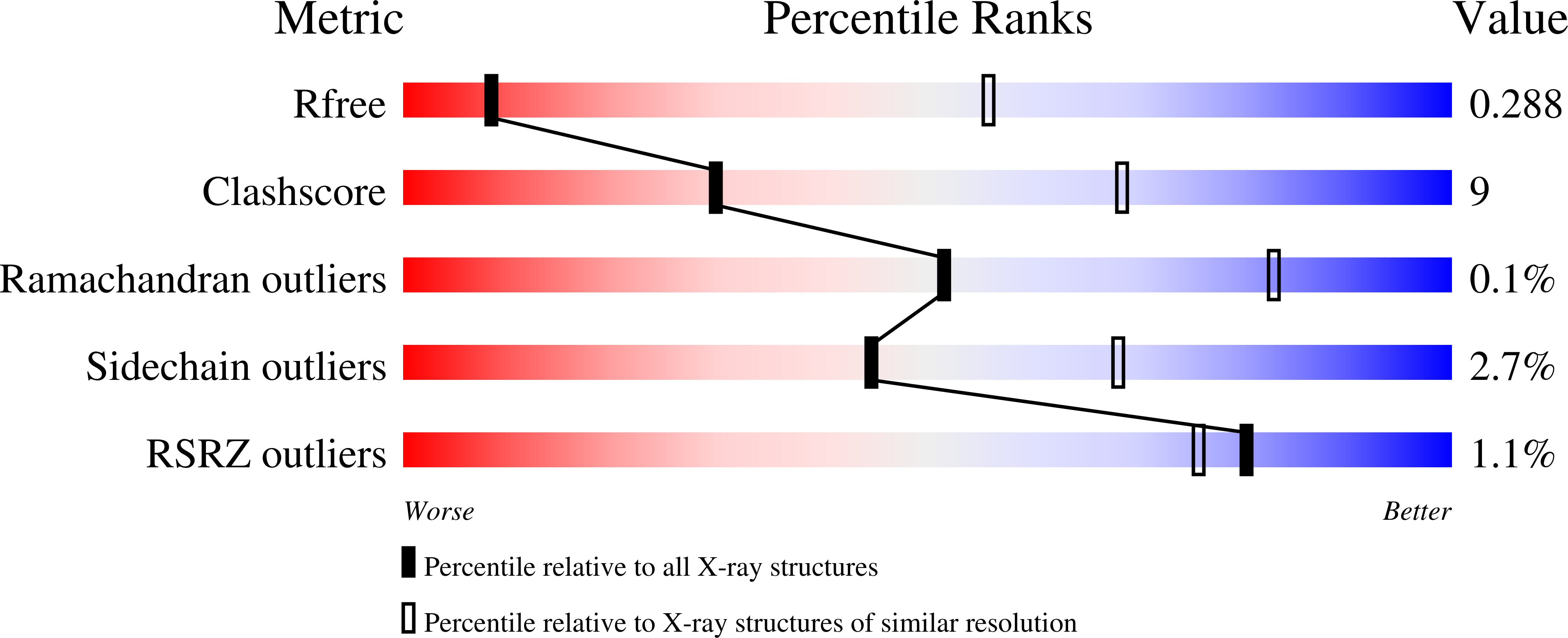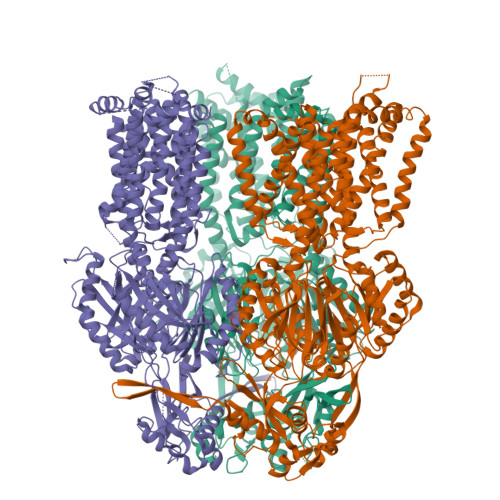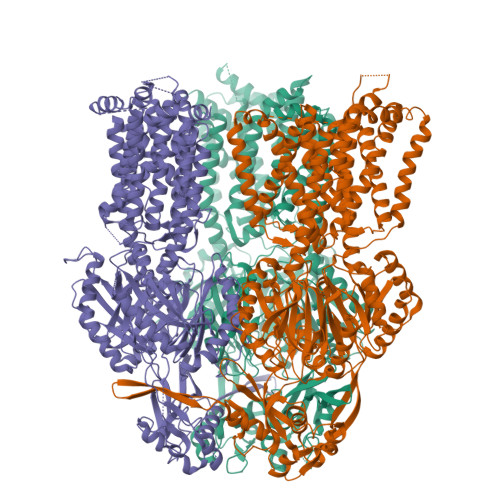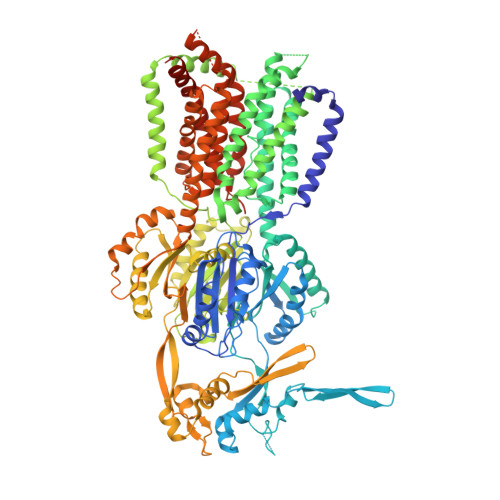Structures of intermediate transport states of ZneA, a Zn(II)/proton antiporter.
Pak, J.E., Ekende, E.N., Kifle, E.G., O'Connell, J.D., De Angelis, F., Tessema, M.B., Derfoufi, K.M., Robles-Colmenares, Y., Robbins, R.A., Goormaghtigh, E., Vandenbussche, G., Stroud, R.M.(2013) Proc Natl Acad Sci U S A 110: 18484-18489
- PubMed: 24173033
- DOI: https://doi.org/10.1073/pnas.1318705110
- Primary Citation of Related Structures:
4K0E, 4K0J - PubMed Abstract:
Efflux pumps belonging to the ubiquitous resistance-nodulation-cell division (RND) superfamily transport substrates out of cells by coupling proton conduction across the membrane to a conformationally driven pumping cycle. The heavy metal-resistant bacteria Cupriavidus metallidurans CH34 relies notably on as many as 12 heavy metal efflux pumps of the RND superfamily. Here we show that C. metallidurans CH34 ZneA is a proton driven efflux pump specific for Zn(II), and that transport of substrates through the transmembrane domain may be electrogenic. We report two X-ray crystal structures of ZneA in intermediate transport conformations, at 3.0 and 3.7 Å resolution. The trimeric ZneA structures capture protomer conformations that differ in the spatial arrangement and Zn(II) occupancies at a proximal and a distal substrate binding site. Structural comparison shows that transport of substrates through a tunnel that links the two binding sites, toward an exit portal, is mediated by the conformation of a short 14-aa loop. Taken together, the ZneA structures presented here provide mechanistic insights into the conformational changes required for substrate efflux by RND superfamily transporters.
Organizational Affiliation:
Department of Biochemistry and Biophysics, Center for the Structure of Membrane Proteins, Membrane Protein Expression Center, University of California, San Francisco, CA 94158.

















